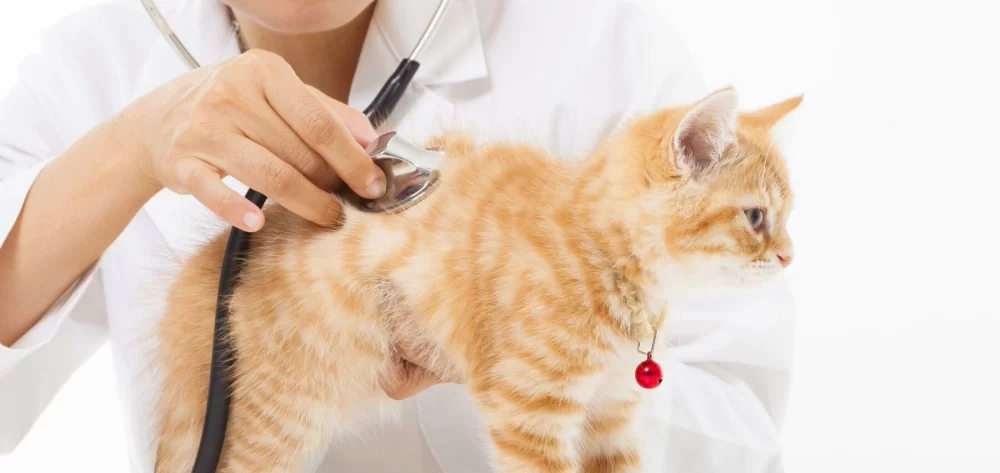Cats are by far the most popular pet among the Swiss. According to the Pet Food Association, more than 1.5 million cats live in Swiss households.
Owning a cat in Switzerland is expensive
Looking after a cat that does not primarily fend for itself is costly. Cat owners in Switzerland can easily spend as much as 500 Swiss francs per cat on cat food alone. Then there are the costs of cat litter, accessories, cleaning and grooming, deworming and defleaing, vaccinating and paying for veterinary services.
Veterinary costs
The cost of veterinary care can very quickly add up to a significant expense. A single health checkup and blood test can cost up to 1000 francs. Treating a broken bone can cost up to 3000 francs and removal of swallowed inedible objects can cost anywhere from 1000 to 2500 francs. Treating a cruciate ligament can cost up to 2500 francs and radiation treatment for a tumor can cost as much as 3000 francs.
Insurance for veterinary expenses
Two types of cat insurance policies are offered in Switzerland. Pet accident insurance covers the costs of veterinary care for the treatment of injuries resulting from accidents. Full veterinary expenses insurance covers the cost of treatment of both illnesses and injuries resulting from accidents. Pet accident insurance is typically much cheaper than full veterinary expenses insurance which covers both accidents and illnesses.
Cat insurance can be taken out for cats which are 3 months old or older. There is usually no maximum age. The exception are the cat insurance policies from ERV. ERV insures cats only up to the age of 6 years.
Cat insurance: not all the costs are covered
Swiss cat insurance providers do not cover pre-existing conditions such as health problems or injuries which occurred ahead of your taking out insurance. Expenses related to dental care, hereditary illnesses, psychological therapies, injuries or illnesses caused by liable third parties, injuries or illness caused by gross negligence on the part of a pet’s owner and operations for purely aesthetic reasons are generally excluded from coverage.
Premiums, deductibles, cover and self-contributions
Swiss cat insurance policies are somewhat complicated. Typically, the same policy can be taken out with one of a number of different deductibles. The premiums charged are based, in part, on the size of the deductible. The age of your pet also directly influences the size of premiums. Premiums increase as your cat gets older. The older your cats become, the higher the premiums you will have to pay to insure them.
The deductible is the portion of veterinary costs which you must pay out of your own pocket. The insurance company pays covered expenses in excess of that amount. In addition, there is a further deductible (similar to the basic health insurance) of 10 percent, which is applied to the amount that exceeds the deductible.
The sum insured is the maximum amount which the insurance provider will pay towards your pet’s veterinary expenses. Some insurers have a sum insured of CHF 50,000 per year. Most, on the other hand, offer unlimited coverage. The rule of thumb is: the lower the deductible and the higher the sum insured, the higher your premiums will be.
Is cat insurance worthwhile?
Insuring your cat’s veterinary expenses can be a good financial move, but it does not pay off in every case. Ultimately, whether you benefit from cat insurance depends on how much you end up spending on veterinary expenses. There are major differences in the premiums charged for different policies, so comparing cat insurance policies is key to finding the right coverage for your needs.
The free moneyland.ch pet insurance comparison includes a tool which automatically shows you whether or not individual insurance policies are financially beneficial based on your estimated veterinary expenses (the green thumbs-up and red thumbs-down icons). The comparison accounts for all variables including deductibles, sums insured, coinsurance payments and premiums to help you quickly and easily find the best cat insurance policy for your needs.
The comparison lets you compare the costs of insuring your cat over multiple-year terms. This is important because premiums increase as insured cats age. Comparison results adjust automatically based on the term you select from the “Calculate savings potential for:” dropdown menu.
Cat insurance: qualification period
Most Swiss cat insurance policies have qualification periods for individual hazards. This is a period of time which begins when you take out an insurance policy and ends after a predetermined number of months. During the qualification period, you cannot file any insurance claims. The insurance company will only cover expenses which are incurred after the qualification period.
If there is a waiting period, it depends on what kind of illness it is and whether it is an accident. In case of accidents the waiting period is the shortest (for example 10 days), in case of chronic diseases it is the longest (for example 3 months).
Special services
In addition to expenses which are excluded from coverage by all insurers, there are a number of veterinary services which are only covered by some cat insurance providers. You can select the filters which correspond to the coverage you need to exclude policies which do not provide the necessary coverage from the comparison.
More on this topic:
Interactive pet insurance comparison




